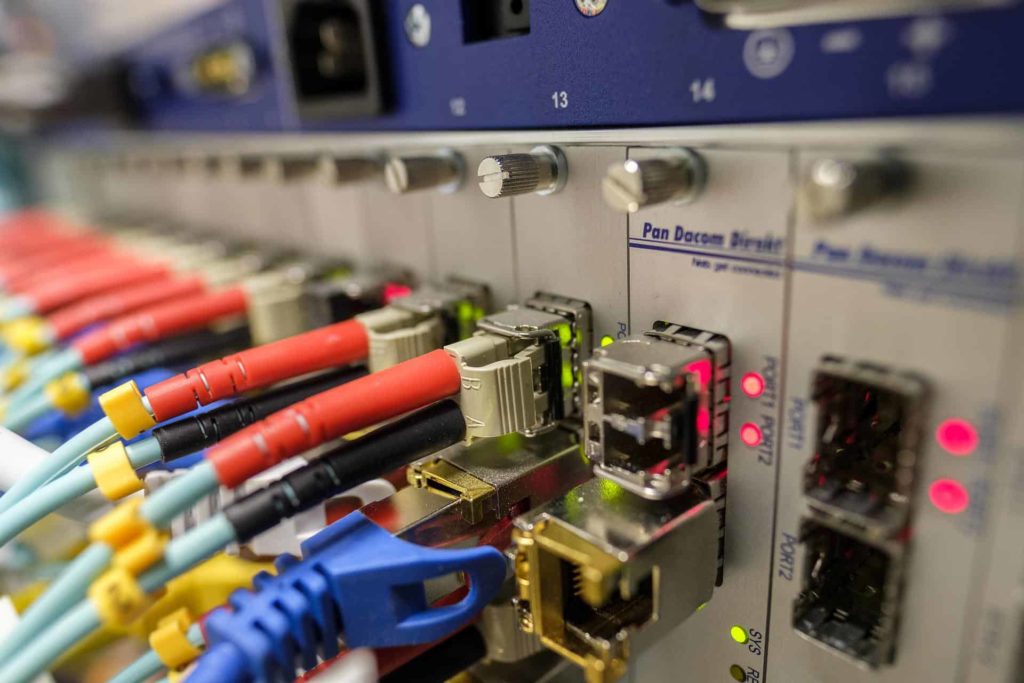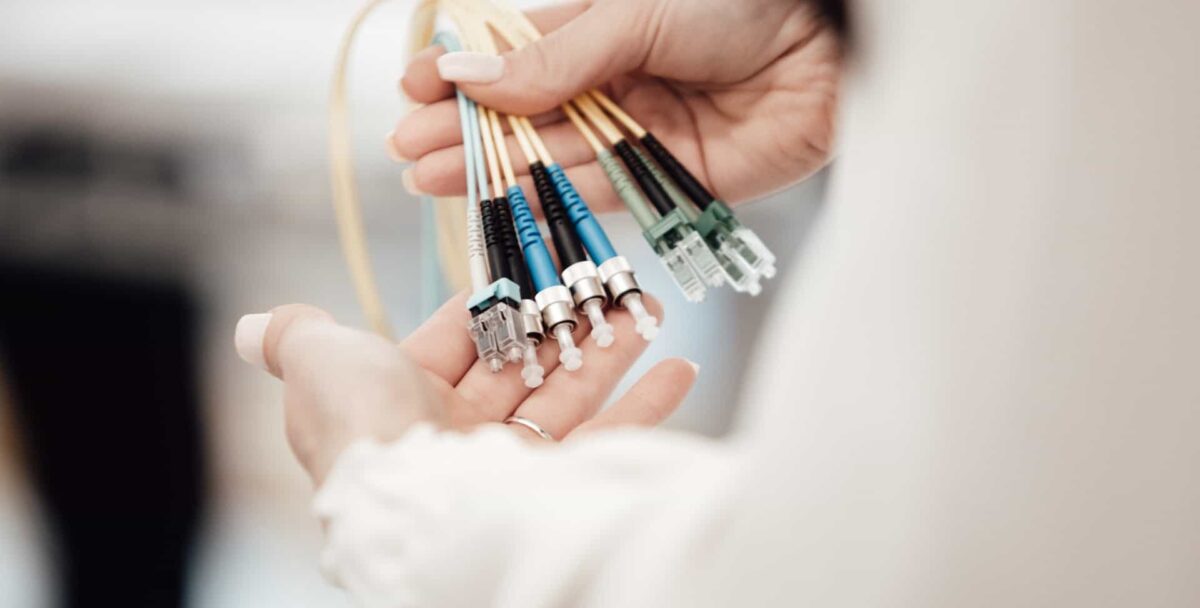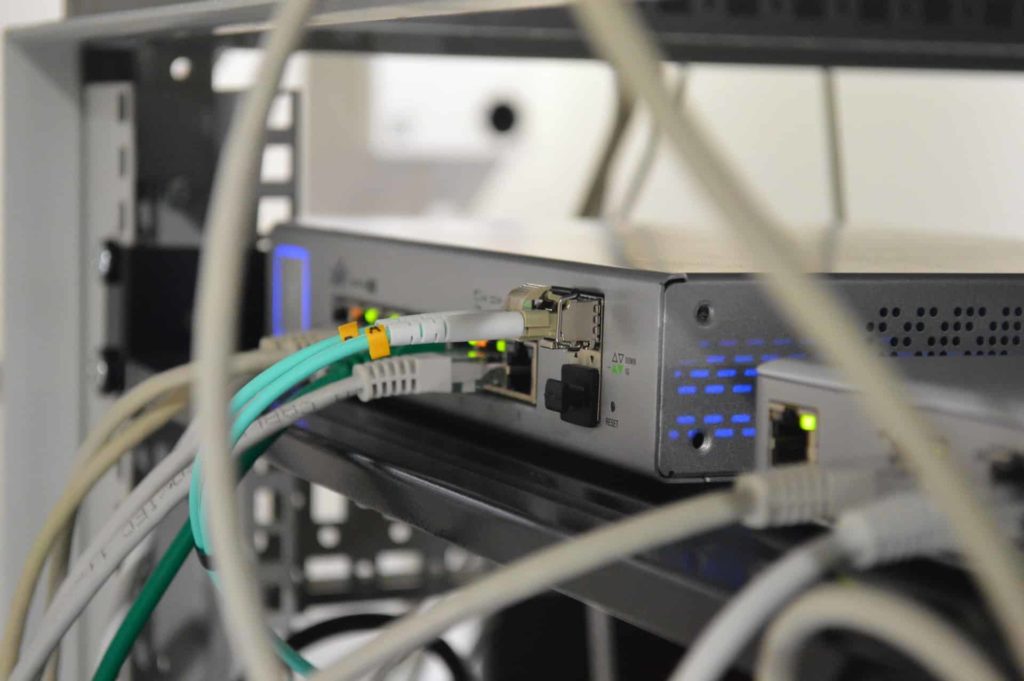People need to look out for a massive range of hazards while working on industrial or commercial networks, especially when interacting with high-powered electrical components and sources of bright light or extreme heat. Sadly, that’s an ample reason why people don’t act as safely around fiber optic cables as they need to.
Because these cables don’t carry an electric charge or serve as a heat source, people believe they are safer than they are. But this misunderstanding of fiber optic cables can make them a dangerous safety hazard.
Below, our team of dedicated tech experts from the C&C Technology Group will explore five critical safety measures people need to take when working with fiber optic cables to help ensure their protection.
Related: 10 Tips To Install Fiber Optics the Right Way
The Top Five Safety Measures of Fiber Optic Cable Work
There are a lot more than five essential safety measures that people should actively leverage when working with fiber optic cables. Still, we don’t have time to delve into all of them with the detail they deserve within this one short article. Instead, we’ll focus on the five primary safety measures people should never forget below.
1. Practice Awareness Within Your Work Environment
When working with fiber optic cables, other types of cabling and electrical equipment will often be present in the environment, including power conductors. Working with fiber optic cables usually involves operating in tight or confined spaces, near power lines, and even atop tall poles. These factors create various safety hazards ranging from dropping a tool on yourself, being exposed to charged wires, high voltages, explosive gasses, and much more.
Those who work with fiber optic cables as part of their job must always be aware of any hazards within their work environment and do their best to avoid exposure to potential risks.
Related: What Are Fiber Optic Jumpers?

2. Keep Yourself and your Work Area Clean
The “fiber” at the core of fiber optic cables is made of a powerful yet delicate glass, which can cause significant injuries and physical damage to people when broken. To help avoid injuries from these specific hazards, people need to keep themselves and their work area clean of glass fragments. To help with this, workers should;
- Always use safety glasses with side shields to prevent glass fibers from contacting the eyes.
- Wear proper hand protection and avoid touching their face while working or before removing their gloves and washing their hands thoroughly.
- Wear protective and disposable lab aprons to prevent fiber particles from adhering to your clothing.
- Ensure their work area is well ventilated to prevent airborne glass particles from being inhaled.
- Keep any food or beverages away from the work area to prevent accidental glass ingestion.
- Properly dispose of all broken fiber cables and scraps.
- Thoroughly clean their work area at the end of every shift.
The C&C Technology Group can help you locate the right technology for your business!
3. Don’t Look Directly Into The End of Fiber Optic Cables
Even if fiber optic cables are live, you won’t see any visible light coming through the end of the cable. However, they can expose you to harmful infrared light that can cause significant damage to your eyes. It’s essential to ensure that there isn’t a light source at the end of the cable and keep the fiber at least six inches away from your eyes.
Also, if you’re using a microscope to examine the fiber optic cable, make sure it’s an electric one so you can monitor the cable on a screen without having to look directly at it and risk damaging your eyes.
4. Be Aware of What Chemicals Your Using
If you’re working with fiber optic cables, you likely have to utilize some termination and splicing processes, which naturally leverage a range of cleaners, adhesives, and chemicals. Before using any of these chemicals, it’s essential to read through and memorize the Material Safety Data Sheet (MSDS) for all of the chemicals you’re using. It’s also vital to follow all necessary, safe handling procedures and understand what to do in case of chemical contact with the skin, eyes, or mouth.
Related: How to Choose the Best Fiber Patch Cord
5. Know The Critical Work Standards Involved
Any work done with fiber optic cables comes with various regulations from governmental departments designed to help keep people safe. People must understand these various regulations and always adhere to them during work. The governmental standards for working with or on fiber optic cables include;
- The National Electrical Code (NEC) governs electrical inspection, installation, and design throughout the United States. The National Fire Prevention Association (NFPA) publishes an updated version of the code every three years. State and local laws require electricians to comply with the regulations.
- The National Electric Safety Code (NESC) lists safe practices for maintaining, operating, and installing various electrical supplies, communication lines, and equipment, including fiber optic cables.
- The U.S. Department of Labor’s Occupational Safety and Health Administration (OSHA) has a set of regulations regarding the maintenance and installation of fiber optic conductors, along with minimum performance standards involved with the work.
Additionally, the company that an individual work for when handling fiber optic cables is bound to have specific safety practices for the job. These should also be adhered to at all times.

Fiber Optic Safety Final Thoughts
Our team of professional tech experts at the C&C Technology Group hopes that the above information will help keep you safe during your future work with fiber optic cables. Please keep all these essential safety measures in mind in the future to help ensure your continued health and wellness.
Also, please consider browsing through our wide selection of other expertly written blog articles and tech tip resources covering a wide assortment of critical tech topics. Need access to top-quality tech and business solutions? The C&C Technology Group can help!
Last Updated on August 2, 2022 by Josh Mahan




